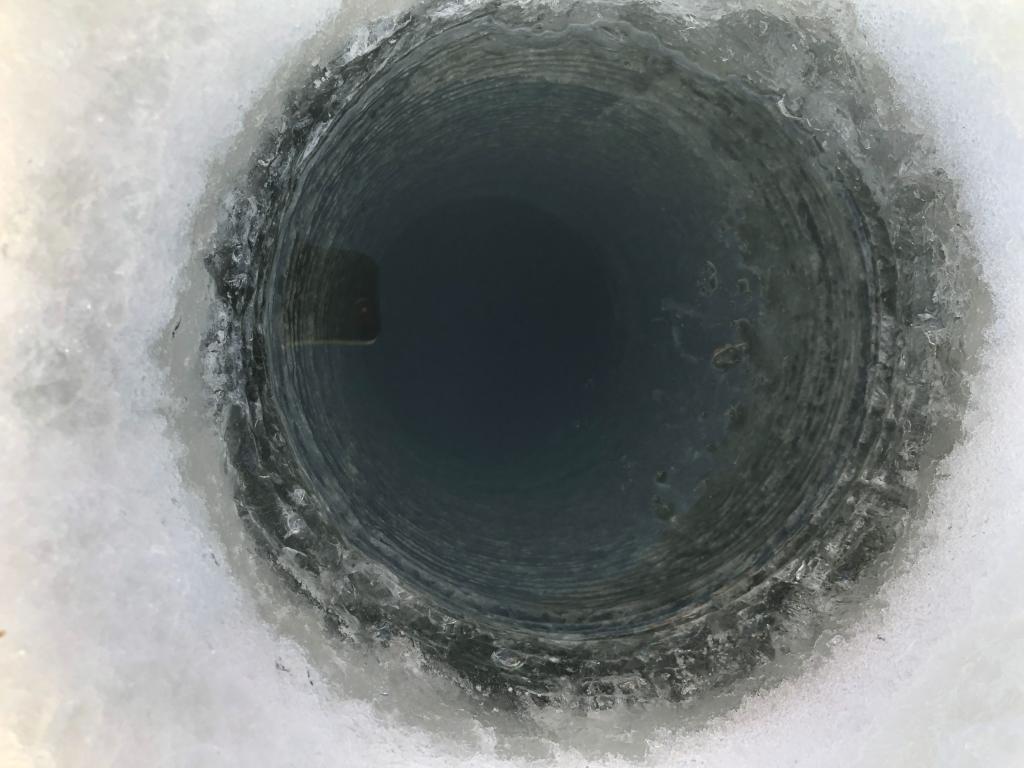CPW issues reminder about educating yourself on ice safety guidelines

 Jason Clay
Jason ClayNortheast Region Public Information Officer
303-291-7234 / [email protected]
@CPW_NE

DENVER - During the winter it is not just ice fishing, but several other winter activities that may take place on the hard water. Colorado Parks and Wildlife reminds everyone to educate themselves on ice safety guidelines to follow, and to have the proper equipment you need for a safe and enjoyable experience on our frozen ponds, lakes and reservoirs.
First, always assume that unsafe ice conditions may exist. In Colorado, ice conditions can vary from lake to lake. Along the Front Range, it is especially important that anglers check ice conditions before heading out because of the region’s notoriously variable weather conditions. Anyone going out onto the ice should drill test holes to measure thickness as they venture out.
“Good, solid clear ice is the safest,” said Bryan Johnson, hatchery manager of CPW's Mt. Shavano Fish Hatchery. “If you have the milky ice, that is typically where it has been freezing and thawing, or where there has been some snow on top of it that has frozen to the ice. Four inches of clear ice is generally a good rule of thumb to start with for venturing out on foot.”
You can watch this ice safety video with Johnson, who shares his 25-plus years of experience of being out on the ice. Some of what he covers includes:
-
Ice thickness
-
What to look for
-
Safety equipment
-
Pressure ridges
-
Ice sounds
Four inches of ice is generally considered safe for people ice fishing and ice skating. However, off-highway vehicles, or OHVs, need at least six inches of ice thickness. Cars and trucks require much more ice, but you have to be sure to check in with the land management agency for that body of water on its regulations as it pertains to bringing any type of motorized vehicle out on the ice. There are different regulations for different bodies of water, so it is up to you to know before you go.
Whenever there is any question about thickness or conditions, stay off the ice.
It is always important to go with a buddy, and to let family and friends know where you are going and when you plan to return.
It is not just people that need to be cautious of the ice, but dog-owners need to protect their pets as well. Keeping your dog on a leash can help prevent them from venturing out onto thin ice that they may fall through. Each year, ice rescues of dogs occur across Colorado.
For a complete list of ice safety guidelines to follow, please visit us online by clicking here.
There’s lots of outdoor fun to enjoy in Colorado, especially in the winter, but please do so carefully. No one can guarantee you that the ice is safe. The decision to go onto the ice is personal and should be made only after taking all the precautions to reduce the risk.
Colorado Parks and Wildlife (CPW) is an enterprise agency, relying primarily on license sales, state parks fees and registration fees to support its operations, including: 43 state parks and more than 350 wildlife areas covering approximately 900,000 acres, management of fishing and hunting, wildlife watching, camping, motorized and non-motorized trails, boating and outdoor education. CPW's work contributes approximately $6 billion in total economic impact annually throughout Colorado.
DISCLAIMER: The Colorado Parks and Wildlife (CPW) website maintains press releases containing historical information that may no longer be accurate. Press releases are dated, which should be noted to determine whether the information provided is current. Please review our current regulations and brochures for up-to-date information.